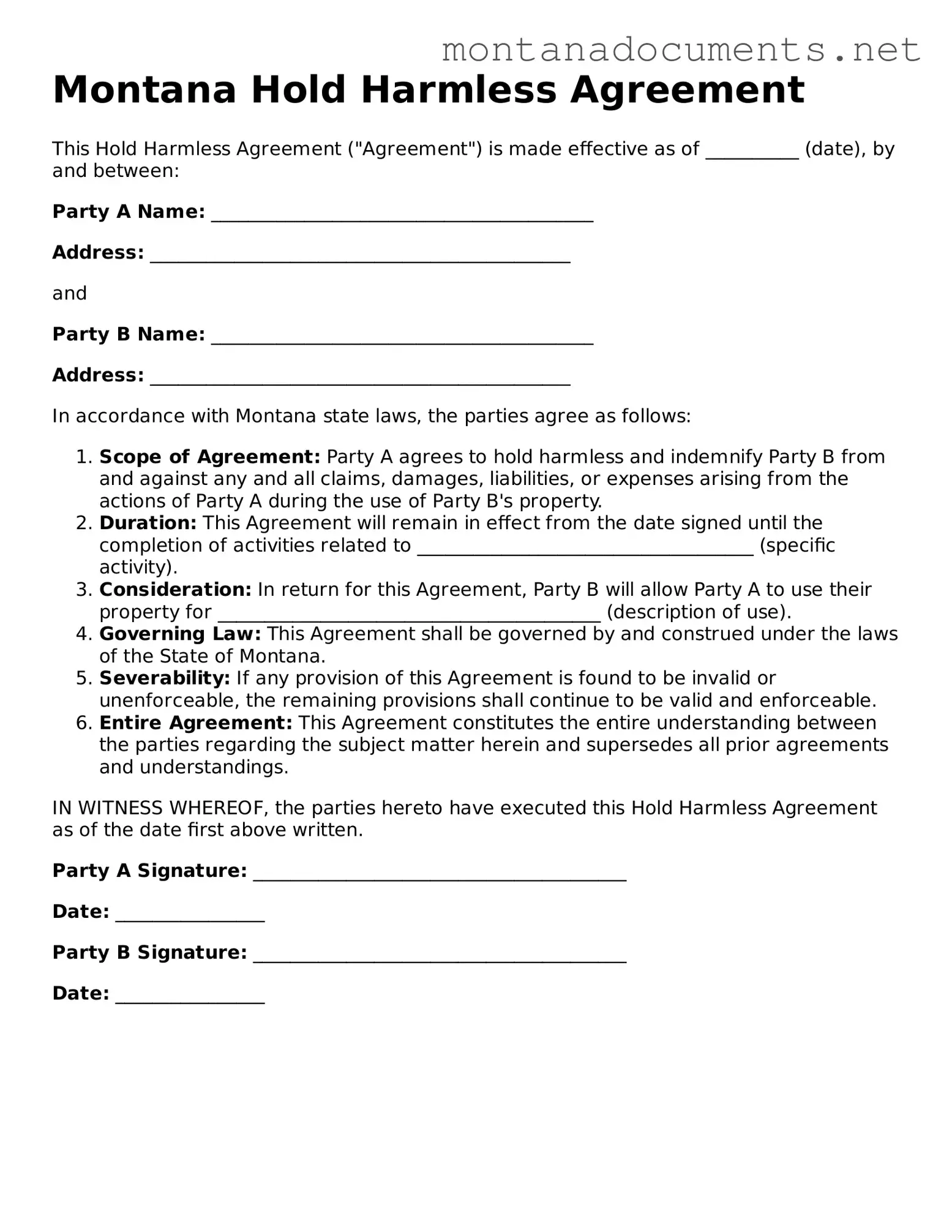Blank Montana Hold Harmless Agreement Document
The Montana Hold Harmless Agreement is a legal document designed to protect one party from liability for certain risks or damages that may arise during a specific activity or event. This agreement ensures that if an accident occurs, the party signing the form agrees not to hold the other party responsible. Understanding the implications of this agreement is crucial for anyone engaging in activities that involve potential risks.
Access This Document Now
